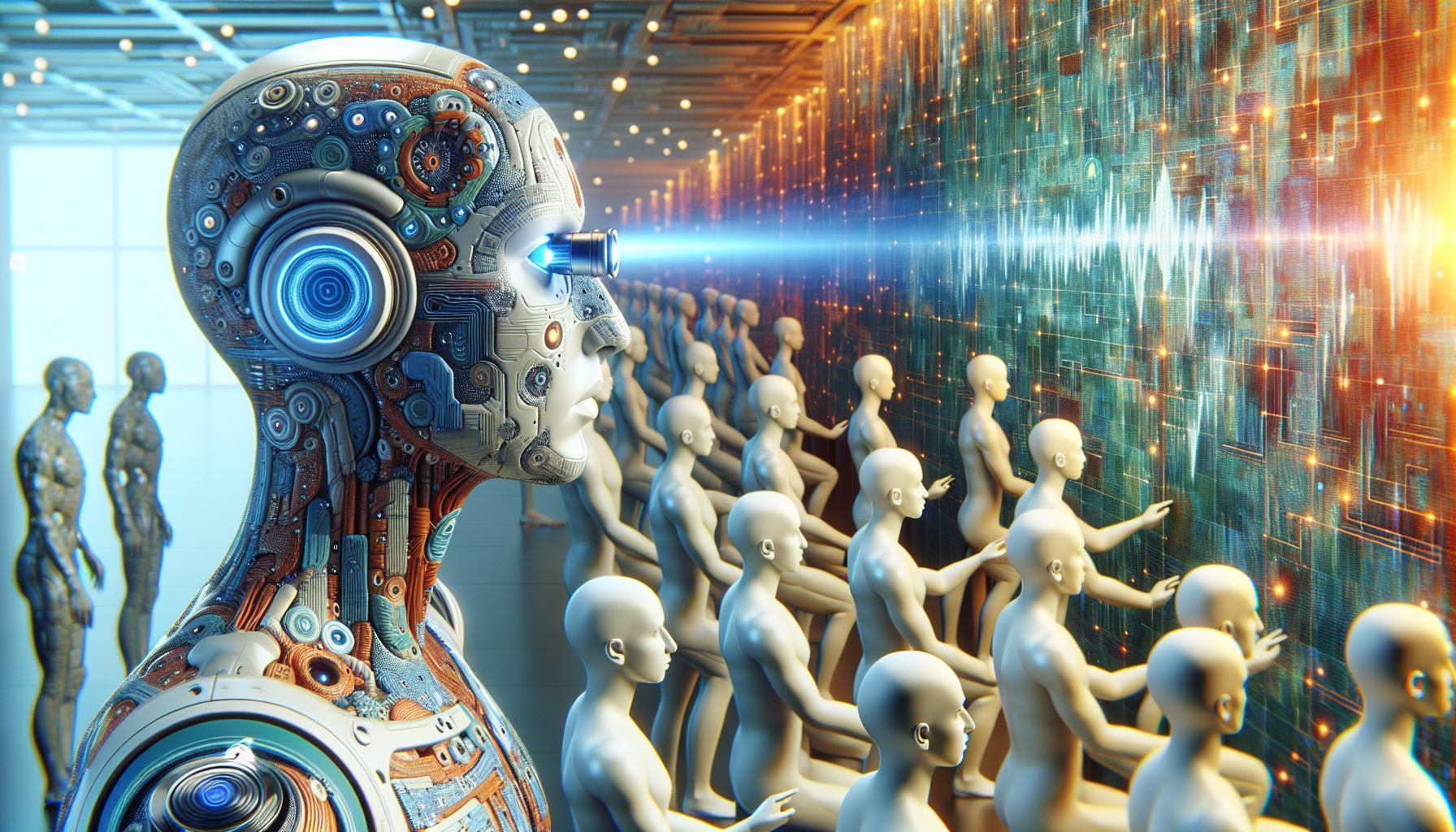The Leap in Reading Comprehension
The landscape of artificial intelligence has witnessed a monumental shift as AI systems begin to demonstrate abilities that not only match but in some cases surpass human performance in various cognitive tasks. A primary indicator of this advancement is evident in the realm of reading comprehension. Recent developments have seen AI successfully parse through complex texts, discern nuances, and understand contexts with remarkable precision — activities once considered the exclusive domain of human intellect.
This leap forward is not just a technological marvel but also a testament to the relentless pursuit of knowledge and the fine-tuning of algorithms. The sophistication embedded within these systems allows them to dissect vast amounts of information, extracting relevant data much quicker than their human counterparts. The implications of such advancements are far-reaching, across industries and spheres of research, accelerating the pace at which we can process and utilize information.
Debating the Benchmarks
In light of these rapid advancements, the scientific community finds itself at a crossroads. There is an ongoing debate, highlighted by prestigious publications like Nature magazine, over the need to establish new benchmarks that can more accurately measure the burgeoning capabilities of AI systems. Traditional metrics, which once served as suitable challenges for AI, are now quickly becoming outdated, prompting a reevaluation of the goals and yardsticks used to gauge AI performance.
The debate is not only technical but philosophical, touching upon the foundation of what it means to be intelligent. As AI begins to creep into territories once thought to be exclusively human, the question arises: should we continue to measure AI against human abilities, or do we need a new paradigm that appreciates the unique nature of machine intelligence? The conversation is as much about the trajectory of AI development as it is about our understanding of human cognition.
AI in Today’s World
The presence of AI in today’s society is more pervasive than ever, with systems performing tasks ranging from the mundane to the complex. Businesses have turned to AI for efficiencies in operations, customer service, and data analysis. Healthcare professionals use AI to diagnose diseases with greater accuracy and speed. The finance sector employs sophisticated algorithms to predict market trends and automate trading. The ubiquity of AI is such that it touches almost every facet of modern life.
However, this integration of AI comes with its own set of challenges and concerns. Issues such as data privacy, ethical use, and the potential displacement of human jobs are part of the discourse. As AI systems become more advanced, there is an imperative need for regulation and guidelines that ensure these technologies are developed and deployed responsibly.
AI’s Evolution and Public Perception
The evolution of AI has been nothing short of sensational, with public perception swinging from awe to skepticism and back. The rapid pace of AI development often catches the public imagination, leading to both excitement over the potential applications and anxiety about the unknown implications. As AI systems become more autonomous and capable, the line between tool and arbiter begins to blur, raising fundamental questions about control and dependence.
Furthermore, the portrayal of AI in media and pop culture contributes to shaping public understanding and sentiment. While some narratives focus on the doom and gloom of a robot apocalypse, others highlight the transformative and positive impact AI can have on solving some of the world’s most pressing issues. Balancing optimism with caution is key to nurturing a well-informed public discourse around AI.
Resetting the AI Learning Curve
The rapid progression of AI capabilities necessitates a recalibration of the learning curve for both humans and machines. As machines take on more complex tasks, it’s crucial for humans to adapt by learning to collaborate with AI systems, understanding their limitations, and ensuring that they’re calibrated to serve the greater good. The current scenario presents an opportunity for humans to step away from routine, automatable tasks, and engage in more creative, strategic, and empathetic roles — areas where AI still lags behind.
Concurrently, AI systems themselves are on a learning curve, acquiring not just factual knowledge but also the intricacies of human behavior, ethics, and decision-making. This learning process is ongoing and complex, with each advancement bringing new layers of understanding and ability.
Looking Ahead: AI’s Trajectory
The trajectory of AI is one of relentless acceleration and expansion. As AI begins to master more aspects of human cognition and task execution, the focus is shifting towards refining its emotional intelligence and creative capabilities. The next frontier for AI could well involve not just understanding human texts but creating original works of art, literature, and even making scientific discoveries.
Concurrently, the debate around benchmarks continues to evolve. New metrics are being proposed that focus on the ethical and responsible use of AI, its adaptability, and its ability to enhance human capabilities rather than replace them. As AI continues to redefine the boundaries of possibility, our benchmarks must evolve to capture the full spectrum of what these extraordinary systems can achieve.
